HIKING

OCT - DEC 2022 ISSUE 44 I FEEL HOW I FEEL.
YOUR WAY TO BETTER HEALTH. A REFRESHING WAY TO BURN CALORIES. CHRONIC SINUSITIS THE SIGNS, SYMPTOMS, CAUSES, AND TREATMENT OPTIONS. LONG COVID COVID-19 MIGHT HAVE AFTER EFFECTS. HERE’S WHAT TO KNOW.





For more information on our screening services orto makean appointment 226.1221 or 800.TTCS I projects@cancer.tt I www.cancertt.com GET REGULAR CANCER SCREENING. OURSCREENINGSERVICESINCLUDE: •Mammograms •Clinical Breast Examinations •Pap Smears •Ultrasounds: Breast, Abdomen, Pelvic, Obstetric, Doppler, Thyroid •Biopsies • Prostate Examinations: DRE (Digital Rectal Examination), PSA (Prostate Specific Antigen) •Blood Tests •Consultations •Fecal Immunochemical Test (FIT) -A new way to test for colon cancer OURMOBILE CLINICS: The TTCS also operate Mobile Clinics which provide screening services throughout Trinidad and Tobago. These mobiles are available by appointment to business institutions for the benefit of their staff and/or sponsored public health fairs. These are fully equipped to conduct Pap Smears, Clincal Breast Examinations and Prostate Examinations, PSA (Prostate Specific Antigen) testing. Cancer is often unpredictable but there is always something you can do to help reduce your risks. The Trinidad and Tobago Cancer Society recommends and promotes screening for early detection of certain cancers. is the first step in winning THE FIGHT AGAINST CANCER
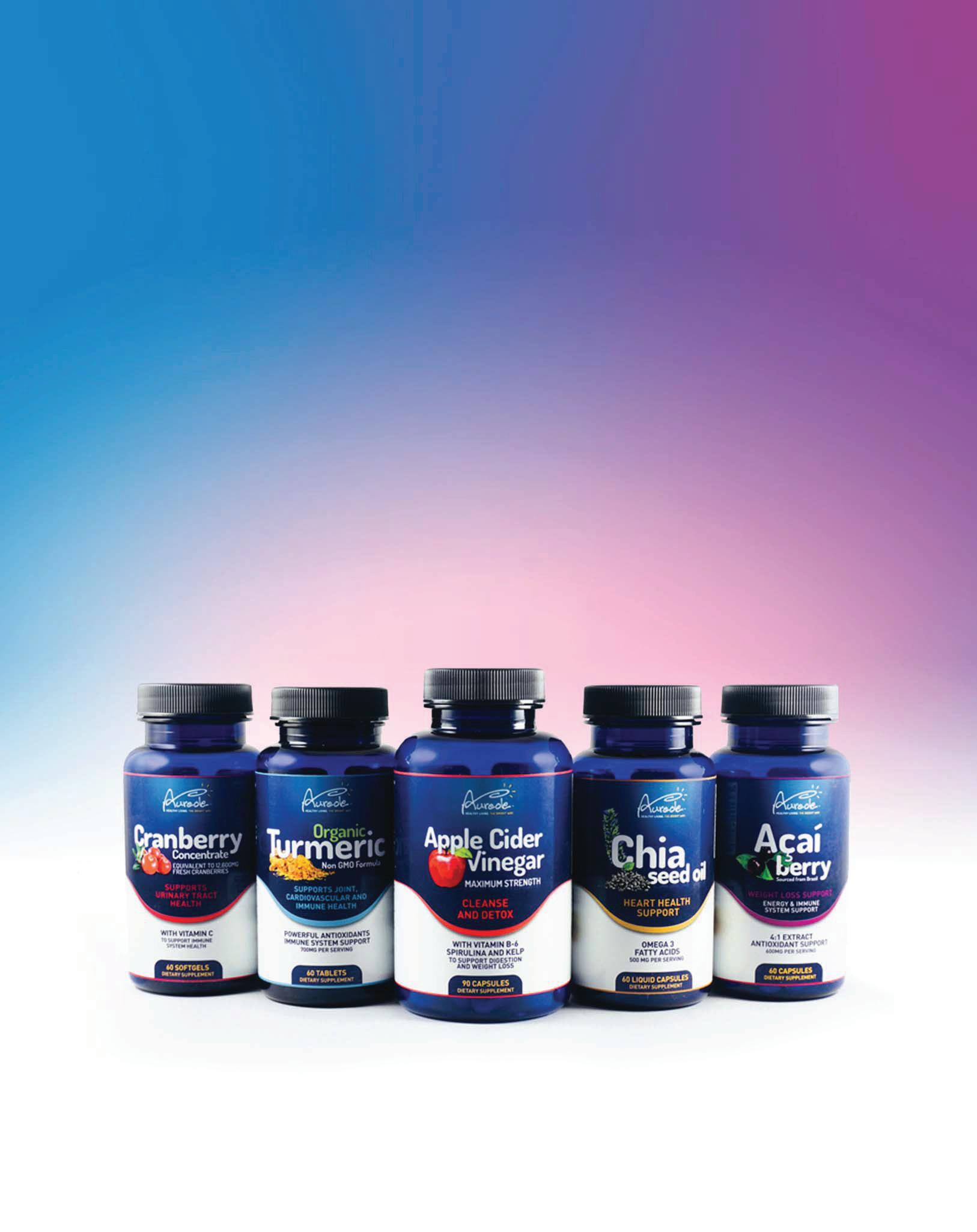







This
ensure that the health information contained herein is accurate and up to date. To the extent permitted by law, Eidetic Publishing, their employees, agents and advertisers accept no liability

Amira Chenelle Mungal
Richard Lutchman
Amira Chenelle Mungal
Pereira

Ryde Kathy Lee
Dunn Dr. Richard Lutchman Dr. Saleem Mohammed Sarah Murphy Sherine Mungal Suraya McComie
Pinder
Ltd.
U The Caribbean Health Digest is published 4 times a year by Eidetic Publishing, Highway Plaza, Level 2, West Wing, LP #80 Calcutta Settlement Road No. 1, Freeport, Trinidad & Tobago. Distribution is handled by Eidetic Limited.
(even if negligent) for any injury, loss or damage caused by reliance on any part of this information. U also contains information supplied by third parties. This information is identified with the name of the source and has been chosen for publication because we believe it to be reliable. To the extent permitted by law, Eidetic Publishing, their employees, agents and advertisers accept no liability (even if negligent) for any injury, loss or damage caused by reliance on any part of this information.
Entire contents are copyright. Reproduction in part or whole is prohibited. Eidetic Publishing is in no way affiliated with companies or products covered in U. Produced and printed in Trinidad & Tobago.

EMAIL US contactnichojen@gmail.com VISIT US www.nichojen.com ATNICHOJEN WE ENVISION, INNOVATE, DELIVER,AND INSPIRE! With over 30 years of experience, we offer a range of electrical installation services, energy conservation solutions, smart home system designs, and consulting services for all your electrical needs. In alignment with our culture of sustainability and over a decade of expertise in renewable energy, we provide consulting for solar, wind turbine, hydropower, and hybrid system designs. Schedule your consultation today, and stay tuned for the launch of our GREEN GADGETS line of products! Founders Editor-in-Chief Medical Advisory Writers Creative Director Design Project Coordinator Traffic Website Publisher Photography Sherine Mungal Stuart Fraser
Dr.
Brandon
Christopher
Lisa
Stuart Fraser Nathaniel
Eidetic
Samantha Dhoon Lorraine Biran Samantha Dhoon Shivan Gosine Eidetic Publishing Getty Images iStockPhoto Pexels Freepik Shutter Stock Vecteezy Unsplash
information is of a general nature only and is not intended as a substitute for professional health advice and no person should act in reliance on any statement contained in the information provided and at all times should obtain specific advice from a health professional. Eidetic Publishing has made reasonable efforts to
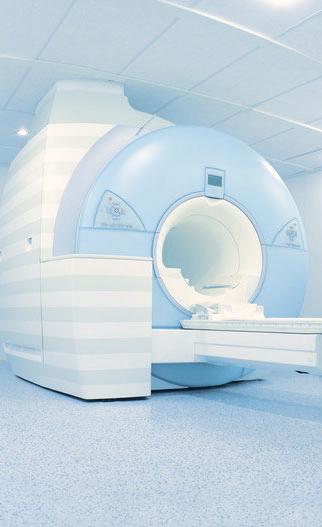




ADVANCED MRI IMAGING ForFurtherInformation: +868-662-2766 Extension4073/4072 www.medicalassociatestt.info QuickAccessto Bookings/Services OnTimeAppointments HighlyTrained&Experienced Staff HighQuality Convenient FastScanTimes Affordable WaitingforanMRI? At MedicalAssociatesHospital,we areoffering $800OFFALLMRI Scans!! *SedationAvailableforanyonewho sufferswithClaustrophobia o
Warm welcome and best wishes for the holidays!
Not sure how you guys feel about the term ‘time flies,’ but it has taken on quite a literal meaning in recent years. In the blink of an eye, our plans are staring us in the face, and we can hardly account for the time in between. Interestingly enough, there may be an actual explanation for this perception of time flying. It turns out that the older we get, the rate at which we process visual information slows down, and this is what makes time “speed up” for us older folks, at least according to the hypothesis of Professor Adrian Bejan. I think we should pursue this subject in the next U.
All this to say that the last issue of U for 2022 is already upon us, and we don’t know where the time went.
As always, there are lots in store for you to enjoy and share in this issue.

It’s been a pleasure having you here with us this year, and we promise we do everything we can to always keep you informed and guided.

Stay Safe and Healthy, and let’s catch up in 2023!
SHERINE & STUART FOUNDERS
DEAREST READERS, Welcome to Issue 44, the last of the year.
It’s my pleasure to bring another issue filled with resourceful health and wellness content to U. Needless to say, we came in full spirited for the Christmas season. I remain in awe of this publication, our team, partners, subscribers, and worldwide readers. My gratitude for each of you stretches beyond limits.
In our feature story, we get emotional, quite literally. We talk about the basic emotions, how they work, and ways to achieve emotional intelligence. In such a hectic world, I can’t think of something more valuable than a grip on our feelings. Additionally, you’ll find articles on fitness, food, and behavioral health. We worked with a talented team of writers who were geared up to bring you the most relevant and impactful pieces of information as it relates to your well-being. Also, I have a feeling you’ll be thanking us for our recipes in this issue.
There’s not much more that I can say without spoilers, so I encourage you to peek at the content page to the right and get started. There’s something here for everyone, and we know you’ll love it.
As always, we feel privileged to be able to publish yet another issue for you. We hope you enjoy it as much as we enjoyed creating it.
Happy reading!
Till next time,
AMIRA CHENELLE MUNGAL EDITOR-IN-CHIEF

Monotasking for the Brain
We’re equipping you with an alternative to multitasking. You’ll learn how to do it, the benefits, and recognize the power of slowing down. We’re sure you’ll be taking this method into the new year.
I Feel how I Feel
Happiness, sadness, anger, fear, and all the other feelings can be overwhelming. Our feature article is here to help you understand and manage your emotions to better control your life. This is a Guide to Emotions.
Hiking your way to Better Health
Maybe you need a break from the gym or looking to try something new. Hiking is the answer. The benefits are abundant, and there’s no doubt your body and mind will thank you.
Ecotherapy Destination
This ecotherapy destination is nested on the sweet island of Tobago. Its pristine water and attractive ocean life make it perfect for scuba divers, beginners, and experts.
Food Fortification
This article answers the question if we’re eating healthy. Learn the benefits and drawbacks of food fortification and better understand how to choose meals suited to your diet.
Sinusitis
We all hate when our sinuses flare up. Dr. Mohammed shares intel about the signs, symptoms, causes, and treatment options.
Scoliosis
Scoliosis is the abnormal curvature of one’s spine, often causing discomfort and pain. This article teaches us about the types of scoliosis and ways to become diagnosed.
Mass Media and Behavioral Health
Modern media is known to impact mental health, but have you ever thought about it influencing our behaviors and beliefs? Learn more about how media is shaping society today.
Rambutan
Our founder loves her fruits. She’s here with all the nutritional facts on this local fruit and is eager that we try it despite its intimidating appearance.
Long COVID
I wish we could be saying, “So long COVID,” but we’re not. Long COVID is the aftereffect of COVID-19. Learn more about it in this article and ways to protect yourself.
10 12 18 20 22
26 30 32 34 36
Mono tasking for the brain.
You don’t have to describe how easy it is to get distracted; trust us, we know. After a few lines of this article, you might switch to your social feed or decide to watch another episode of that show on Netflix. While doing that, you’ll probably get the urge to do something else. The question herein is, are we completing what we set out to do? Probably not. The studies suggest that while our distractions are harmless, they definitely dent our overall productivity. This article aims to help you control those distractions by focusing on one task at a time.
Multitasking and the Brain.
We’ve all heard of multitasking. This is when we perform more than one task at a time to boost productivity. Some of us pride ourselves in our ability to multitask, while others find the concept

vastly overwhelming. While multitasking is useful in time-crunching situations, studies suggest that embracing a constant state of busyness might be doing our brains injustice. While we interpret multitasking as a way of doing many things at once, what happens to our brain during the process is known as ‘task-switching.’ During task-switching, our brain rapidly shifts attention to different tasks, which scientists suggest is the death of productivity. Research indicates that chronic multitaskers show a 40% decrease in productivity, lower IQ, and a reduced amount of grey matter density in the anterior cingulate cortex, the area linked to empathy and emotions.
Let’s talk about Monotasking.
Monotasking is the healthier alternative to getting your tasks done. This is the practice of dedicating
10 | u MINDSET | PLANNING
WRITTEN BY LISA DUNN
your time to a single task. According to many scientists, monotasking is a mindset. It allows us to reevaluate our relationship with time and adds value to our work. Think of it as productivity without the tug-of-war for attention. Its myriad of benefits include:

- Improved accuracy
- Increased productivity
-
attention span
- Reduction in distractions
Kickstarting the Monotasking Mindset.
• DEEP WORK – this happens when we alleviate all distractions—for example, working in an environment without our phones, TV, or even friends. Think of all the physical things that distract you and try removing them from your space.
Let’s say it together slowly… One thing at a time.
• CLOCK WORK – designate specific hours to work or study. Find the time that suits you best and create a schedule around that.
• MAKE LISTS – create a list with all the things you plan on achieving and work on them one at a time. Avoid moving on to other tasks without completing the previous task.
Science has proven that our brains cannot simultaneously allocate equal attention to everything. However, with proper timezmanagement and mental devotion to the activities on our to-do lists, we can accomplish what we need to. Remember, the secret to performing tasks efficiently and effectively stems from our mindset. So, if you have plans to finish the year strong, start by monotasking your way through your goals. We promise only good can come from it.
PLANNING | MINDSET 11 | u
Improved
YOU EVER REALIZED WE HAVE SO MANY FEELINGS ABOUT HOW WE FEEL? DON’T EVEN MENTION HOW WE FEEL ABOUT HOW OTHERS FEEL. I EXPERIENCED NEARLY HALF A DOZEN EMOTIONS DURING THIS ARTICLE, AND I SURELY FEEL SOME WAY ABOUT THAT. EMOTIONS CONSTANTLY EXIST, AND THOUGH IT MAY SEEM AS IF WE ARE RULED BY THEM, THEY COME WITH GOOD INTENTIONS, AND WE NEED THEM FOR SURVIVAL. SO, CUE YOUR FEELING OF EXCITEMENT BECAUSE WE’RE ABOUT TO LEARN THE WORLD OF EMOTIONS.
FEATURE | EMOTIONS HAVE
12 | u I Feel How I Feel! A Guide to Emotions WRITTEN BY AMIRA CHENELLE M.
EMOTIONS | FEATURE 13 | u
WHAT ARE EMOTIONS?
Emotions are reactions to human experiences. They are triggered by a person’s interpretation of a circumstance. For example, if we receive good news, we experience happiness. Emotions play an important role in our daily lives, driving us to decisions based on whether we feel happy, angry, sad, bored, et cetera. Psychologists interpret emotions as a psychological state made up of a subjective experience, physiological response, and behavioral response.
THE BASIC EMOTIONS
The Basic emotions were coined by psychologist Paul Eckman as universally experienced in all cultures. This meant that emotions evolved with our distant ancestors as responses to ecological threats. Eckman believed that each basic emotion is connected to a specific neurological circuit that triggers behaviors for survival. These basic emotions include:
• Happiness – the most sought-after emotion. This is that joyful emotional state involving feelings of satisfaction and gratification.
• Sadness – we often experience sadness in response to feelings of grief, disappointment, hopelessness, or disinterest.
• Fear - one of the most important emotions for survival. Fear triggers your fight or flight response, preparing you for threats in your environment.
• Disgust – usually derives from an unpleasant reaction to sight, smell, or taste. Disgust protects us from harmful substances.
• Anger – a very powerful emotion often triggered by feelings of hostility, frustration, agitation, or opposition.
• Surprise – usually brief, this emotion arises in response to something unexpected, positive, or negative. Later in his studies, Eckman added pride, shame, embarrassment, and excitement to his list of basic emotions.
THE WHEEL OF EMOTIONS
Following the famous color wheel pattern, psychologist Robert Plutchik created the wheel of emotions. If you imagine a color wheel, you will know red and blue make purple, and blue and yellow make green. Emotions work similarly. For example: Joy + Trust = Love or Sadness + Disgust = Remorse Our basic emotions act as building blocks to form different and more specific feelings.
THE WAY IT WORKS
You might be saying to yourself that emotions must have layers because how you feel when angry isn’t how I might feel when I’m angry. You wouldn’t be wrong. We all experience triggers differently when it comes to emotions. Our behaviors following our emotions vary despite undergoing the same emotions. This is where the three elements of emotion matter:
• The Subjective Experience
Emotions are tailored and multi-dimensional. A person’s reaction can vary based on several reasons: past experiences, beliefs, disorders, et cetera. For example, consider happiness; some of us smile when we’re happy and others cry. We’re still both happy, though. Emotional expression can also differ based on other existing emotions. For example, having a baby can make you both excited and anxious, altering your reaction.
• The Physiological Response
Our bodies generate involuntary responses to our emotions. Are you familiar with butterflies in your stomach when you’re nervous or a racing heartbeat when you’re scared? These are known as physiological responses to emotions. Different systems within our bodies directly react to emotional prompts.
- The autonomic nervous system is responsible for the body’s blood flow and digestion.
- The sympathetic nervous system controls fight-or-flight.
- The amygdala, located in the brain, is the hub for emotional behaviors and motivation.
14 | u FEATURE | EMOTIONS
• The Behavioral Response
This is the most perceptible form of emotional expression; it’s what we do because of how we feel. These gestures paint a picture of our emotional intelligence. It demonstrates how in anger, some of us are alarming calm while others might turn a room upside down. Within this element, we feel like we lack control of our emotions.
CONTROLLING OUR EMOTIONS
We all go through those moments of feeling lost in our emotions. I usually say, “I can’t speak right now. I’m in my feels,” while my best friend sits in her car trying to initiate a crying session to “get it all out.” I get it! I’ve been studying emotions for years, and I can tell you, it’s not easy managing your feelings. So, let’s talk it out.
The big EI – emotional intelligence. This is our ability to perceive, interpret, demonstrate, control, and use emotions to communicate constructively. Furthermore, it is the ability to respond to the emotions of others appropriately.
When you hear the term ‘emotional intelligence, you probably think to yourself, “Pssshhtt, sure, I’m emotionally intelligent. My reactions to situations are responses to other situations.” And yes! I’m here to say that your feelings are likely valid, but a large responsibility of being emotionally intelligent lies in how you convey your feelings. Ask yourself these questions:
- Am I able to identify what people are feeling?
- Do I practice self-acceptance?
- Am I able to let go of mistakes?
- Am I aware of my strengths and limitations?
- Am I curious about how other people feel?
- Do I empathize with others?
- Am I sensitive to the feelings of others?
- Am I able to manage my emotions in tough situations?
- Do I embrace change?
You may not feel strongly about all your answers, which is normal. We’re human, remember? Your takeaway should be to get in the habit of applying your emotional intelligence to scenarios where you feel less in control. This brings me to the four pillars of EI:
1. Self-Awareness – this involves emotional and accurate self-assessments. Once you’ve identified your feelings, strengths, and weaknesses, remain self-confident.
2. Self-Management – you must be able to practice self-control to achieve emotional maturity. Align yourself with goals and initiatives that prioritize your success. Remain adaptable, transparent, and optimistic with yourself and others.
3. Social Awareness – being able to explain yourself and be conscious of how you are being interpreted is vital for emotional success.
4. Relationship Management – this requires self-awareness, management, and social awareness. It is the ability to manage conflicts without losing control.
I FEEL GOOD!
I’ve given you an overview of basic emotions and all the steps to emotional intelligence. Emotions play a crucial role in our lives. They shape our decisions, goals, relationships, and outlook on life. You can better understand how they affect your behaviors by understanding how they work. And keep in mind emotions are powerful but temporary. Your sadness will fade, and so will your fear and happiness. So, use them wisely to achieve your goals and find a sense of purpose.
15 | u EMOTIONS | FEATURE
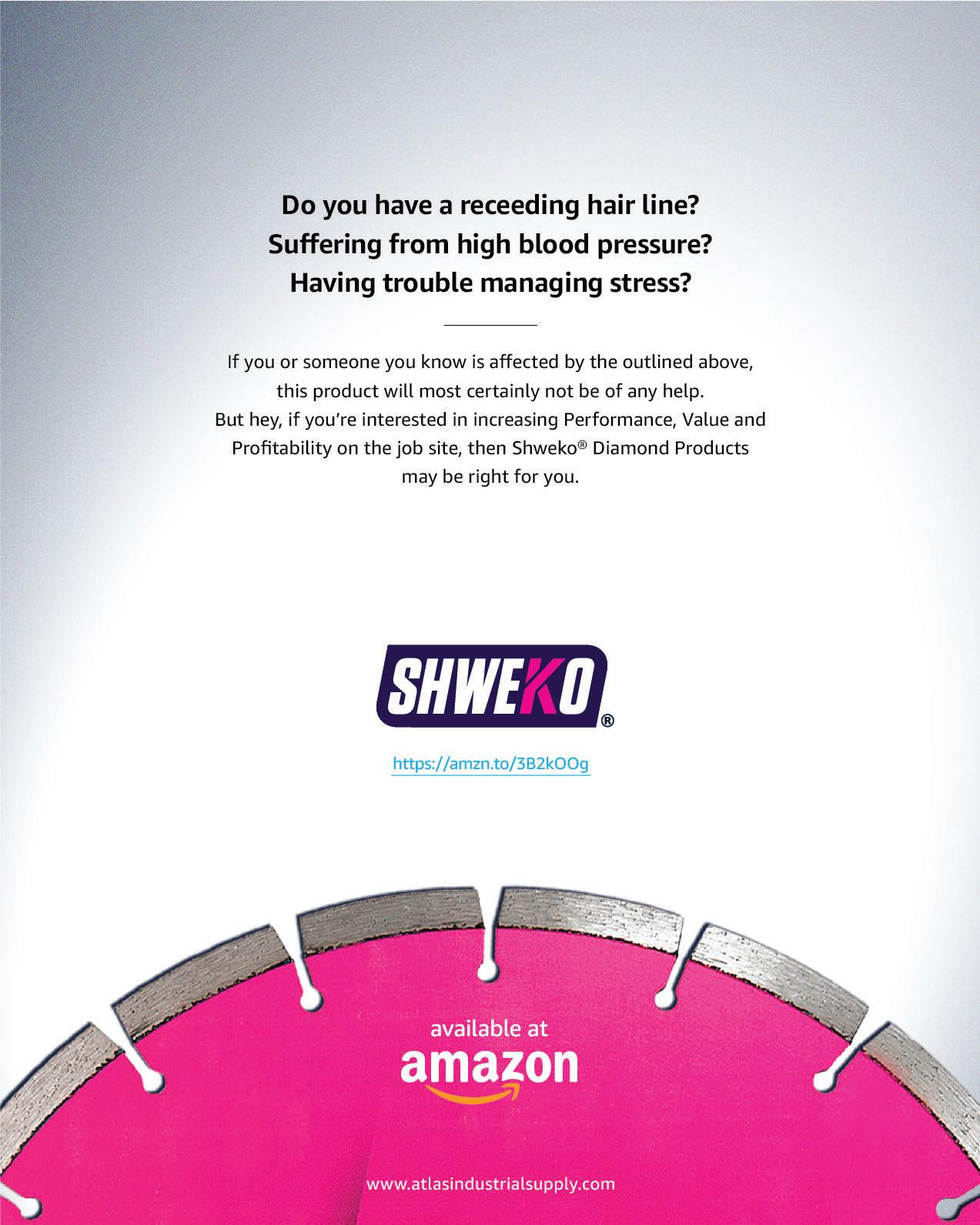
















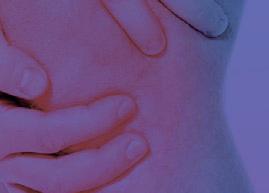

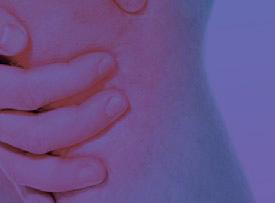
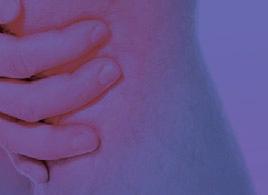
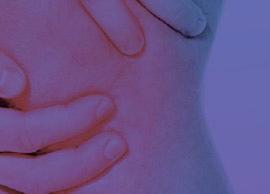
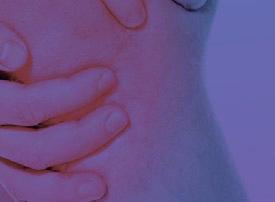
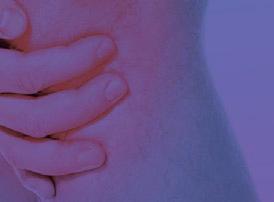



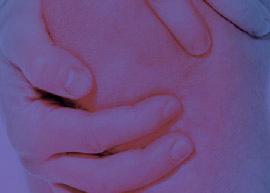
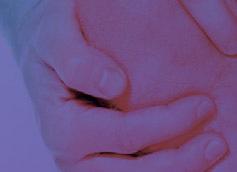

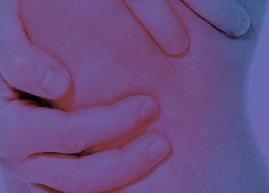


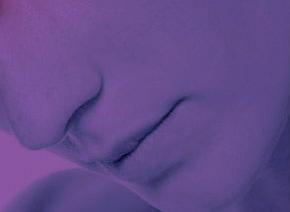














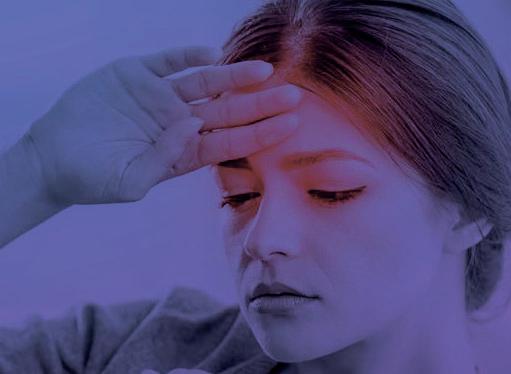


















































































































































































































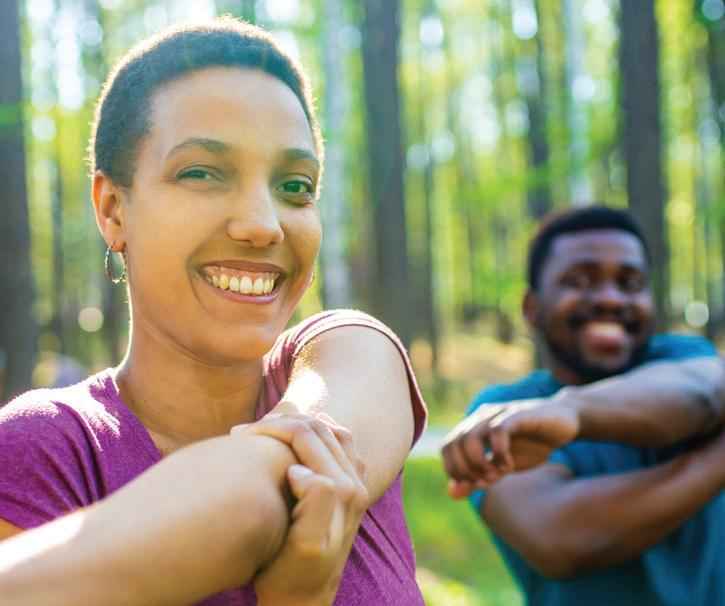






















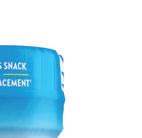
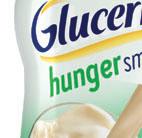





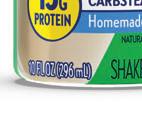
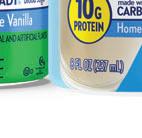
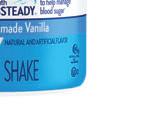

Proven effectiveness for acutepain, suchas: headache, menstrual pain & dental pain Combinedbenefits of two powerfulingredients Affordablecombination therapy Rapid onset of action WHEN FAST PAIN RELIEF IS NEEDED, REACH FORPARACONICA PLUS SUPERIOR & FASTERPAIN RELIEF THAN PARACETAMOL OR IBUPROFEN ALONE AVAILABLEAT PHARMACIES NATIONWIDE









FITNESS | HIKING 18 | u Hiking Your Way to Better Health. WRITTEN BY CHRISTOPHER RYDE
If you have read any of our previous articles, you will know that hiking and ecotherapy is no stranger to us. This article will discuss how hiking can improve physical and mental health. Sometimes we need to exert some energy and burn some calories while, at the same time, breathing in some fresh air and appreciating beautiful scenery. Trinidad offers hundreds of beautiful hiking destinations, some easily walkable and some that are more challenging but nonetheless beautiful and very therapeutic.
WHY HIKE?



There are numerous physical health benefits that we get from hiking, and today we are going to discuss a few of them.
- Hiking is good for your heart. Your cardiovascular health increases even when doing small, light hikes. This is because our heart rate increases during hiking, and so does our endurance and fitness level.
- Hiking also exercises the lungs because we become encouraged to practice our breathing more when our bodies are in more challenging conditions. Before you know it, you will be able to hike in more challenging terrains, barely feeling fatigued or out of breath.
- Research also shows that regular hikes can significantly reduce hypertension, improve glucose tolerance, and even lower cholesterol levels over time.
- Another benefit of hiking is that it helps build muscle. Hiking does not explicitly target leg muscles, and many people assume this. Because of the rough terrain that hiking usually consists of, many of our lower and upper body muscles are working all together, and it may not even feel that way. For example, walking uphill while hiking engages the calves, glutes, hamstrings, and quads. On the other hand, walking downhill on the terrain exercises our ankles, hips, and core. Our back muscles, biceps, and triceps could be engaged with trekking poles or even a moderately heavy backpack/hiking bag.
- Lastly, another major benefit of hiking is that it is considered a calorie burner. This does not require too much explaining; any form of cardio essentially results in weight loss. The number of calories burned during a hike depends on factors like weight, gender, and aerobic intensity, but if you are just starting, even light hiking can result in gradual weight loss.
HIKING SAFELY.
When hiking, an important factor to always consider is safety. Here are some tips to remember:
1. Know your limits. Do not underestimate the hike, especially if you are alone.
2. Make sure you have more water than you “need,” and even take some protein bars or snacks.
3. Hiking with a partner is highly recommended, not just for safety but fun.
4. If you plan on hiking in the night or having an overnight hike, it is essential to have extra equipment such as flares or tools to make a fire, not only if you get lost, but for warmth when sleeping.
Altogether, hiking is not only good for your physical health but also your mind. It is fun, and once the safety measures are met, you will have an amazing time and experience just how impactful to your health hiking can be.
HIKING | FITNESS
19 | u
SCUBA DIVING IN SPEYSIDE, TOBAGO
 WRITTEN BY STAFF WRITER
WRITTEN BY STAFF WRITER
Many of us are aware of the natural beauties that the island of Tobago has to offer, from white sand beaches to nature reserves and forestry. Scuba diving is another popular activity on the island, and we’re shining a spotlight on the very well-known area called Speyside. Located in the north-eastern part of the island, Speyside is particularly known for its scuba spots and beautiful reefs. This section of the island attracts more experienced divers because of the number of sites the area offers. Speyside has over 30 challenging dive sites and is also the home of the world’s largest brain coral formation. Located on the southern tip of goat island, 10 minutes outside of Speyside, is home to what divers refer to as a “Japanese Garden.” When divers refer to the term “Japanese Garden,” they refer to any underwater formation resembling the pristine and well-kept environment of an actual traditional Japanese garden, just underwater. This site is challenging and has a lot of down current; therefore, only well-experienced divers are advised to go, but if you are not a professional diver, that is not a problem! There are a few dozen authorized and professional dive tours in the Speyside area.
The underwater life in Speyside is so scenic and memorable that oftentimes, divers stay in the area for days and sometimes weeks on end just exploring the sites. Whether commercial diving or recreational diving, the dive culture in Speyside hits differently! Some beautiful and extraordinary creatures you are most likely to encounter include sting rays, puffer fish, groupers, turtles, parrot fish, octopi, squid, barracudas, lobsters, and the list goes on. You will never say that you had a boring dive if you dive in Speyside. Aside from the diving aspect of Speyside, there are also many on-land, affordable accommodations, and food spots in the area. All in all, the underwater life and the scuba diving community are so strong and prominent that it would be difficult for an inexperienced diver to resist grabbing a snorkel and surveying the surface.
ECOTHERAPY | SPEYSIDE, TOBAGO
20 | u
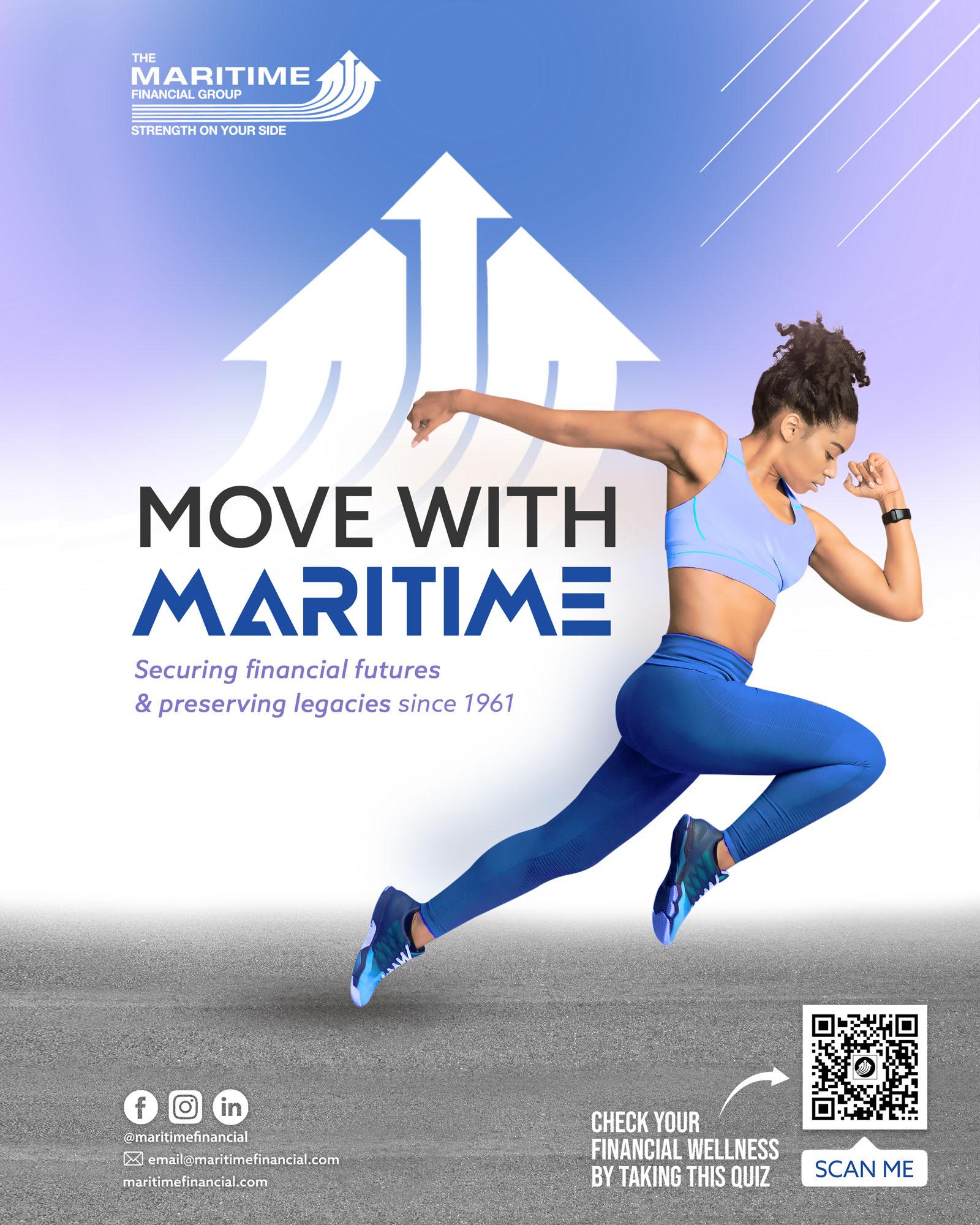
Food Fortification. Food Fortification.
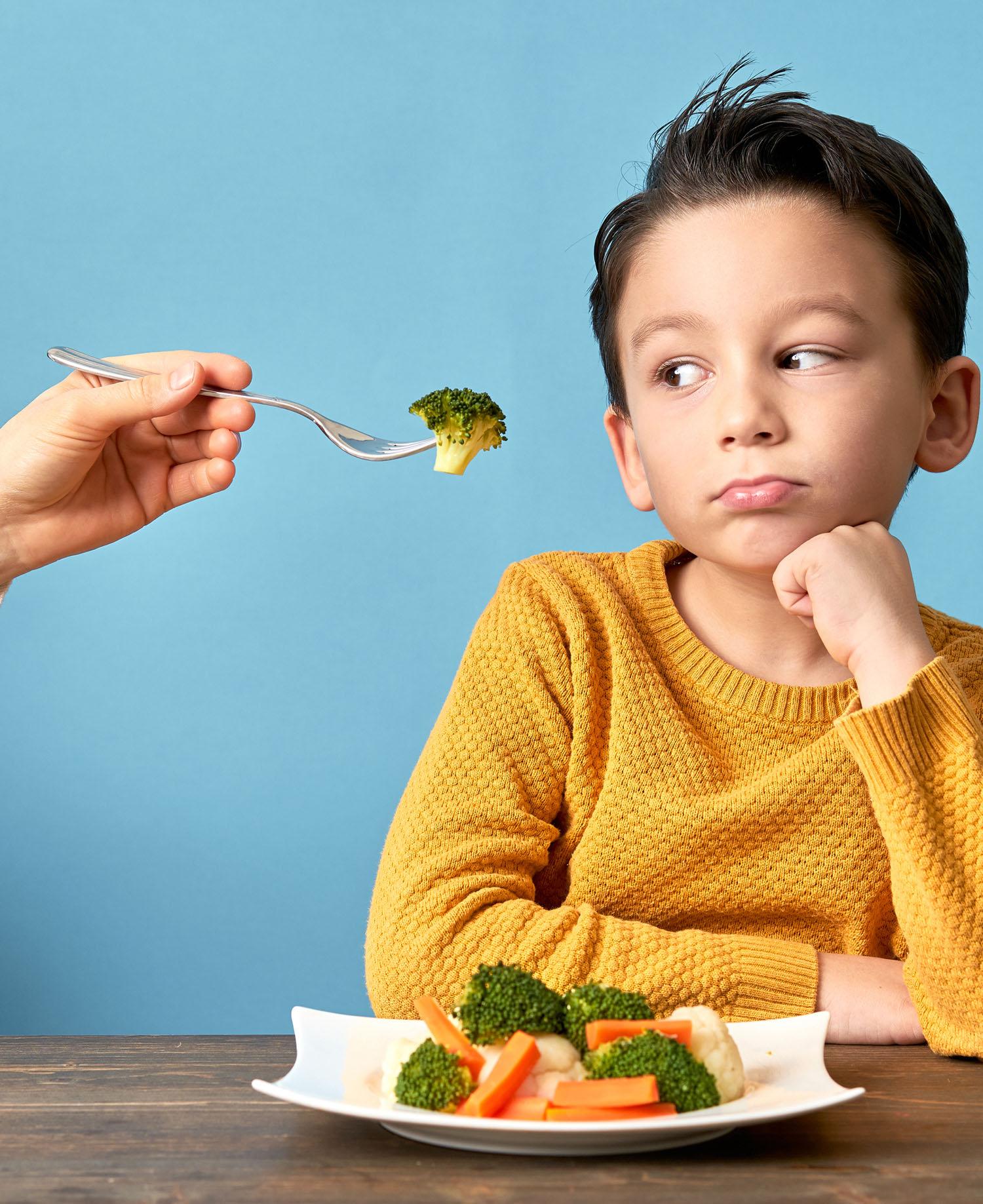
Are we eating healthy?
Let’s face it; if we were to meet the recommended dietary guidelines based solely on our diets, many of us would fall short. How many of you eat fresh fruits or vegetables at least twice a day? With our hectic lifestyles, consuming all the vitamins and minerals we need to sustain our health very quickly becomes difficult. So, we depend on dietary supplements and fortified or enriched foods to fill the gap.
22 | u
WRITTEN BY SARAH MURPHY
DIET | FORTIFIED FOODS
Fortified, fortified functional, and enriched foods.
Fortified foods are foods with added nutrients and vitamins. These foods don’t usually contain the nutrients or vitamins added. For example, adding vitamin D to orange juice.
Fortified functional foods are like fortified foods but with a healthy intention. They included added nutrients for a specific purpose. For example, adding collagen in protein bars to enhance skin health.
Enriched foods are foods that typically lose nutrients during processing and are then readded to restore their original vitamin levels. For example, when whole wheat becomes flour, iron may be reduced and readded during the enrichment process.
Is it healthy?
Fortified foods are significant in helping combat nutritional deficiencies. Unless we master the art of following a balanced diet, we need help feeding ourselves for our health. Fortified and enriched foods have been around for ages and played a major role in keeping our nation healthy. Here are some benefits of fortified and enriched foods:
•Cost-effective – nutrient-rich foods can be costly.
•Prevent nutrient-related inadequacies – they make it convenient to include nutrients in your diet.
•Protect older adults – as we age, it becomes more difficult to absorb vitamins and minerals. Fortified foods allow older adults to maintain healthy micronutrient levels.
•Help children grow – little ones are usually more at risk for nutritional deficiencies, so the ingestion of fortified foods can boost overall nutrition.

•Cater for dietary needs – some nutrients are only available in animal products or high-allergen foods; therefore, fortified foods provide nutrients to vegetarians, vegans, lactose-intolerants, et cetera.
The risks.
Beware: Not all fortified foods are healthy!
•Processed foods – many fortified and enriched foods are heavily processed and can include insanely high amounts of sugars, fats, sodium, and other ingredients you probably don’t want in your body. The key to identifying red-flag fortified foods is to pay attention to the ingredients listed on your food labels. This is critical to health as some foods can contribute to diseases such as diabetes, hypertension, or obesity without you knowing.
•Vitamin overdose – too much of anything is harmful. It is possible, especially for infants, to get too many vitamins and minerals in their diet.
While fortified and enriched foods and dietary supplements make it easy to get our recommended dosage of vitamins and minerals, it does not compare to a well-rounded, varied diet with fresh fruits and vegetables. Remain aware of what you’re eating, and do not take food labels for granted. Read them and stay ahead of what goes into your system. After all, our health is one of the most important things, so we must put effort into protecting it.
FORTIFIED FOODS | DIET 23 | u



Bread Recipe









Multigrain
RECIPE BY STAFF WRITER Bread can be intimidating, but with this multigrain recipe, you don’t have to be worried. Designed for beginner bread makers, this recipe is perfect for the end-of-year season. Pair it with your pastas, turkey sandwiches, or enjoy a slice with your flavored butter. YIELDS: 6 INGREDIENTS: 1½ Cups Whole Wheat Flour 1½ Cups Spelt Flour 1 Tablespoon Dry Yeast 2 Teaspoons Salt 1½ Teaspoons Coriander 340ml Lukewarm Water 3 Tablespoons Mixed Seeds (Sunflower, Pumpkin, Flaxseed) INSTRUCTIONS: 1. Set aside your mixed seeds in 1 cup of water to soak. In a large bowl, mix your whole wheat flour, spelt flour, coriander, and salt. 2. Dissolve your yeast in lukewarm water, add to the flour mixture, and knead until your dough becomes soft and elastic. This step usually takes 10-15 minutes. 3. Roll the dough into a ball, lightly coating its surface with olive oil. Place into a bowl, cover with a damp cloth and let it rest for 1 hour. 4. Remove the dough from your bowl and incorporate half of your seed mixture, then shape your dough into a loaf shape, slightly smaller than your baking tin. (NB. Drain your seeds of any water). 5. Grease your tin or line it with baking paper, then place your loaf in the center of your tin. Top your dough with the remainder of your seeds and allow it to rest for 45 minutes. 6. Set your oven to 480˚F and allow to bake for 15-20 minutes on the middle rack. 7. Check that your bread is baked completely using a thermometer (aim for 190-200˚F) and set it aside to cool before slicing. MULTIGRAIN BREAD | RECIPE 25 | u





















26 | u HEALTH | SINUSES
WRITTEN
BY
DR. SALEEM MOHAMMED
WE ALL HATE IT WHEN OUR SINUSES ACT UP. THE DRIPPY NOSE, EXCESSIVE SNEEZING, FACIAL PRESSURE, HEADACHES… JUST READING THE SYMPTOMS CAN BE ANNOYING. SO, WHY DOES IT HAPPEN, AND MORE IMPORTANTLY, HOW DO WE TREAT IT? THIS ARTICLE GIVES YOU A COMPLETE RUNDOWN OF SINUSITIS.
WHAT IS SINUSITIS?
Our sinuses are made up of four paired hollows in the head located between the eyes, behind the cheekbones, and in the forehead. Each sinus is named after a nearby bone, i.e., ethmoidal, sphenoidal, maxillary, and frontal. They’re designed to make mucus which keeps your nostrils moist and protects them from dust, allergens, and pollutants. A healthy sinus is usually filled with air but can sometimes undergo blockages or become filled with fluid. When this happens, it causes an infection known as sinusitis.
TYPES OF SINUSITIS
There are four different types of sinusitis, each with the same symptoms but set apart by the duration.
• Acute Sinusitis – usually lasts between 2 to 4 weeks
• Subacute Sinusitis – 4 to 12 weeks
• Chronic Sinusitis – more than 12 weeks
• Recurrent Sinusitis – occurs several times a year
WHAT CAUSES SINUSITIS?
We know that sinusitis happens when your sinuses become filled with fluid or blocked in some way. Many conditions can contribute to sinus blockage, including:
- The common cold
- Swelling of your nostril lining, usually caused by allergens. This is known as allergic rhinitis.
- Growths in the lining of the nose, referred to as nasal polyps.
-
-
septum
system
SYMPTOMS OF SINUSITIS
Some
•
•
•
•
•
•
•
•
•
•
of taste and
(bad breath)
TREATMENT OPTIONS
For a simple or acute sinus infection, your doctor may recommend over-the-counter decongestants and saline nasal washes. However, if your symptoms of sinusitis are long-lasting and more severe, your doctor might prescribe antibiotics.
In addition, there are many home remedies for coping with sinusitis. Here are a few tips:

1. Try using a bioelectric device on your face to clear congestion.
2. The use of warm, moist air can also help clear congestion. Feel free to inhale steam from a pan, or if you suffer from chronic or recurrent sinusitis, invest in a vaporizer.
3. Consume plenty of fluids. This keeps your mucus thin, preventing sinus blockages.
4. A warm compress with a heated face towel can also help calm the inflamed sinuses.
5. Avoid allergens, including dust, pollen, and animal dander.
Home remedies have proven helpful for many people suffering from sinusitis, but it is important to avoid triggers. For example, stay away from smoking, wash your hands regularly, and ask for an allergy test the next time you visit your doctor.
Sinusitis is no joke. It can make you feel very miserable. If you are experiencing symptoms of sinusitis despite treatment, do not hesitate to contact your doctor. With proper diagnosis, they can cater to your circumstance.
SINUSES | HEALTH 27 | u
A deviated
A weakened immune
of the most common symptoms are:
Pressure in the eyes, nose, and forehead
Nasal discharge – thick yellow/green
Stuffy nose
Postnasal drip (mucus drips down the throat)
Tooth or earaches
Headaches
Coughing
Tiredness
Loss
smell
Halitosis

Enjoy Peace of Mind with remote monitoring of your home. cctv sales and installation. call: 868 716 3603 email: bordertechtt@gmail.com visit:
How do antibiotics work?
Antibiotics help the body fight bacteria by killing or weakening
so that our immune system can tackle them more easily. The most widely known antibiotic is penicillin, which is made from mold. Penicillin kills bacteria by interfering with the formation of the cell walls or cell contents of the bacteria.


U ASK We always enjoy hearing from you! Email your questions to register@uhealthdigest.com ANSWERED
BY DR. RICHARD LUTCHMAN
Q&A | YOU HAVE QUESTIONS, WE HAVE ANSWERS Is secondhand smoke bad? Yes! Secondhand smoke or Environmental Tobacco Smoke (ETS) is bad. Nonsmokers involuntarily inhale a mixture of smoke from the burning end of a cigarette or cigar and exhaled smoked. This increases the risk of many illnesses including cancer, respiratory infections, and asthma. We don't just treat heart and vascular disease. We reverse it. Our Team performs some of the most complex Angioplasties and offpump, beating heart Bypass Surgeries in the world; and that's what makes us the Experts at knowing how to prevent them. Having touched over 6000+ hearts, we aim for the prevention and reversal of heart and vascular disease, tailored to each patient's needs. 18ElizabethStreet,St.Clair.www.cheartcare.com 1(868)info@cheartcare.com 628-6674/5978 • 24HR CARDIAC SURGERY • 24HR INTERVENTIONAL CARDIOLOGY & CARDIAC CATHETERIZATION • VASCULAR AND ENDOVASCULAR SURGERY • ELECTROPHYSIOLOGY & DEVICES • INTERVENTIONAL RADIOLOGY & NEURORADIOLOGY • STRUCTURAL HEART DISEASE • ECHOCARDIOGRAPHY & STRESS TESTING • OTHER ELECTIVE PROCEDURES OUR SERVICES CELEBRATING
germs
SCOLIOSIS CAN BE DEFINED AS THE ABNORMAL CURVATURE OF ONE’S SPINE, USUALLY RESEMBLING A “C” OR “S” OVER THREE-DIMENSIONAL PLANES. MOST SOCIETIES, INCLUDING THE SCOLIOSIS RESEARCH SOCIETY, DEFINE SCOLIOSIS AS A COBB ANGLE OF MORE THAN 10° TO THE RIGHT OR LEFT AS THE EXAMINER FACES THE PERSON. ACCORDING TO THE SCOLIOSIS RESEARCH SOCIETY, ROUGHLY 2-3% OF TRINIDADIANS SUFFER FROM SCOLIOSIS. IN ADDITION, APPROXIMATELY 54,000 TRINIDADIANS LIVE WITH MODERATE TO SEVERE SCOLIOSIS, AND APPROXIMATELY 1% OF THESE PATIENTS ARE IN NEED OF CORRECTIVE SPINE SURGERY. In some patients, the degree of curvature is stable, i.e., it doesn’t change, but in other cases, the degree of curvature can progress with time and as the patient ages. People who have already reached skeletal maturity are less likely to have a worsening case. The severity of the curve in scoliosis can be broken up into mild, moderate, and severe. Scoliosis can be broken up into four main categories: thoracic scoliosis, lumbar scoliosis, thoracolumbar scoliosis, and mixed scoliosis, affecting different parts of the spine, respectively.



















30 | u DISEASE | SPINAL CURVATURE
WRITTEN BY DR. RICHARD LUTCHMAN
TYPES OF SCOLIOSIS
SIGNS & SYMPTOMS
&SYMPTOMS
Significant signs that are associated with scoliosis can include: - uneven musculature on one side of the spine - a prominent rib hump or a protruded shoulder blade - uneven hips - limb length discrepancies - uneven posture - slow nerve actions
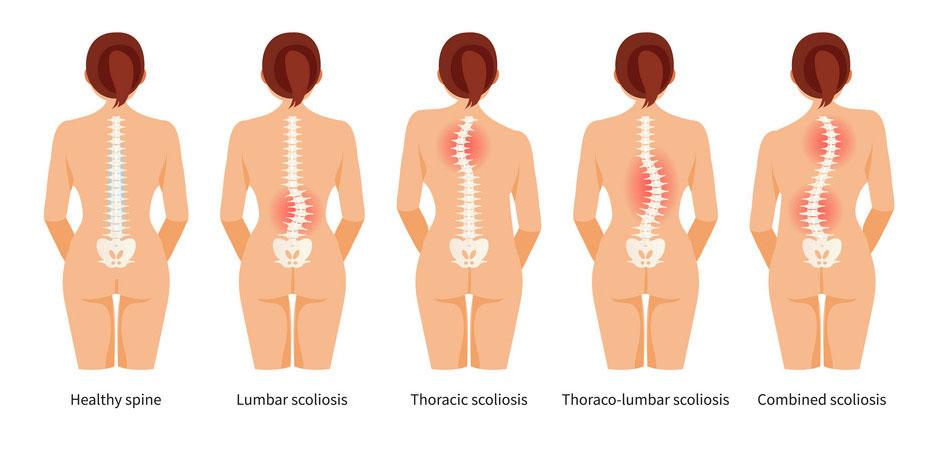
Patients may also present with a host of other symptoms, such as nonspecific back, neck, ribs, and buttock pain, constipation, limitation of movement, and, in severe cases, respiratory or cardiac problems.
CAUSES
While the cause of most cases of scoliosis remains unknown, it is believed to be a combination of genetic and environmental factors. An estimated 65% of cases are idiopathic, 15% congenital, and 10% are secondary to neuromuscular diseases.
Scoliosis has been heavily linked to genetics, but unfortunately, the specific genes that contribute to the development of scoliosis have not been conclusively identified. At least one gene, CHD7, has been associated with the idiopathic form of scoliosis. Several other genetic studies have found associations between idiopathic scoliosis and genes mediating bone formation, bone metabolism, and connective tissue structure.
DIAGNOSIS
The diagnosis of scoliosis usually starts with a thorough history and examination done by your doctor to exclude a more sinister diagnosis than scoliosis. It is imperative that the medical practitioner assess gait, after which they would request x-rays of the spine. When scoliosis is suspected, weight-bearing, full-spine anteroposterior, and lateral x-rays are done to evaluate not only scoliosis but kyphosis and lordosis of the spine, as these can both be affected by the condition. In growing individuals, serial radiographs are obtained at 3- to 12-month intervals to follow curve progression, and, in some
instances, an MRI is warranted to visualize the spinal cord. The standard method for assessing the curvature quantitatively is measuring the cobb angle, which is the angle between two lines drawn perpendicular to the upper endplate of the uppermost vertebra involved and the lower endplate of the lowest vertebra involved. For people with two curves, Cobb angles are followed for both curves bone formation, bone metabolism, and connective tissue structure.
TREATMENT
Scoliosis does not resolve on its own. It either progresses or remains stable. Many children have slight curves that do not require treatment, and in these cases, the children grow up to lead normal body posture even though their small curves never resolve or receive treatment. For patients with greater curvature of the spine, it is in the best interest to perform serial x-rays and have them examined by an orthopedic surgeon to determine the need for active surgical treatment.
Traditional medical management for scoliosis is usually complex and determined by the severity of the curve and skeletal maturity to determine the progression of the disease. Some traditional techniques employed are observation, bracing, physical therapy, and surgery. However, new evidence has suggested that bracing, along with scoliosis-specific physiotherapy, may stop the progression of the disease almost entirely, leading to the avoidance of surgical approaches.
For adults with scoliosis, the same options are offered, but the mainstay of treatment is pain management and posture correction.
CONCLUSION
In the grand scheme of things, scoliosis is still a problem that we face in society, with the majority of the affected being children. On the optimistic side of things, research is still being explored to understand and treat scoliosis worldwide; hence we can expect great breakthroughs in the near future.

SPINAL CURVATURE | DISEASE 31 | u
Mass Media’s Impact

32 | u
WRITTEN BY BRANDON PEREIRA
BEHAVIORAL HEALTH | MASS MEDIA on Behavioral Health GROWING UP IN TODAY’S CULTURE, WE’RE AWARE OF THE POWERFUL EFFECT THAT MASS MEDIA HAS ON OUR MENTAL HEALTH, SOME POSITIVE, SOME NEGATIVE. BUT WHAT ABOUT OUR BEHAVIORAL HEALTH? IS MASS MEDIA INFLUENCING OUR BEHAVIORAL TENDENCIES AND SHIFTING OUR BELIEFS AND ATTITUDES? THIS ARTICLE DIVES DEEP INTO MODERN MEDIA AND ITS IMPACT ON OUR ACTIONS.
With the overwhelming abundance of information at our fingertips, it is almost impossible to filter our intake. Inevitably it becomes easy for us to mimic what we see or hear without even having to leave the house. Between the news, movies, and music, influence over our actions can become implanted involuntarily. Think about when we immerse ourselves in a TV drama or movie. Parts of us begin to envision ourselves as the character. As a result, we develop feelings and emotional excitement till after the program ends. This lingering effect is the beginning of behavioral change.
Here are some major ways mass media shapes our behaviors:

• VIOLENCE CAN BE GLORIFIED! - Very common in television films are depictions of violent and unstable individuals. Kids, particularly, develop tendencies to replicate behaviors in their social circles, giving rise to bullying and unhealthy coping mechanisms for social discomforts.
• STEREOTYPES ARE FED! - Another problematic aspect of mass media is that stigmas are evident all-round. We are confronted with societal nuisances, including sexism, racism, and ageism.
• FOMO – the fear of missing out! If my favorite rapper is giving praise for drugs, it must be good, right? No, but it becomes challenging to remind yourself of this because of how glorified drugs and alcohol
are in modern media. Think about that feel-good Seth Rogen film that makes us all laugh; ‘a good time’ is portrayed when characters are under the influence.
On the flip side, there is no denying that mass media shapes us positively. It brings us together, spreads awareness on varying societal issues, and educates us. Cultural and linguistic barriers also get broken down due to mass media, and consumers can now understand a completely different culture and virtually explore so much more of the world.
The truth is we’re not about to unplug our televisions or throw our phones into a lake, and we shouldn’t. Instead, we should be mindful of the information we embed into our brains. We must draw the line between reality and fantasy.
Here’s what to remember: Media acts as a control to society. It drives us to initiate what we see and hear. We enter a new realm in the form of a sponge, absorbing all around us. While this seems intimidating and can imply that we have less influence over our lives than we would like, we are in control. As tempting as the trends in popular media is, behavioral changes are significant, positively, and negatively. Exercise your right to choose your living style, moral thoughts, and actions.
MASS MEDIA | BEHAVIORAL HEALTH 33 | u
At first, its prickly exterior seems unapproachable and maybe even a bit standoffish, if I had to give it a personality that is; but, once you get to know it, you'll quickly realize that the thorny skin is, in fact, softish hairlike textures and on the contrary quite welcoming to the touch.
Rambutan
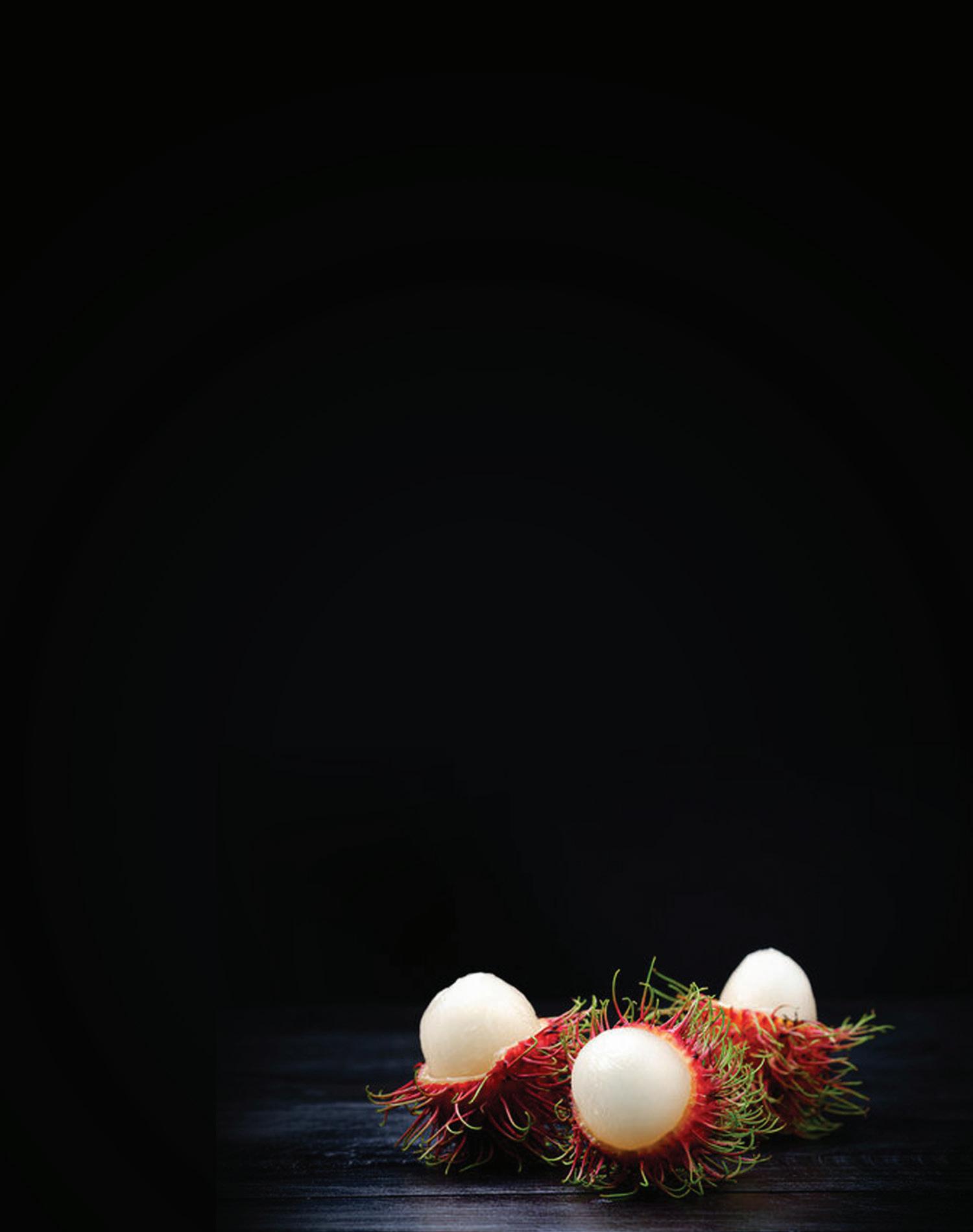 WRITTEN BY SHERINE MUNGAL
WRITTEN BY SHERINE MUNGAL
Native to Malaysia, Rambutan is making quite a name for itself. Its presence can be seen worldwide, making big statements in the groceries, health food stores, and farmers' markets, and there's no need for an introduction either; everybody seems to know something about this fruit.
In Trinidad, we see it in fruit stalls along the roadside. While the exteriors may look dull and tired, perhaps from the journey to our shores, maybe southeast Asia, Hawaii, or even Australia, where it is widely cultivated today, the inner goodness is still packed with a juicy, tangy, and sweet flavor.
Once you have satisfied your curiosity and tried this fruit, you'll want to keep returning, if not for the taste but for the health benefits it can bring to your diet.
Health Benefits
Rambutans are proven to support a healthy immune system in many ways:
in Vitamin C and antioxidants important in fighting off free radicals
dietary fiber in both soluble and insoluble form •Rich in Vitamin B5, which plays an essential role in helping your body convert food into energy • Excellent source of potassium, calcium, folate, and choline
Nutrients per Serving
Calories – 7
– Less than 1 gram Fat – Less than 1 gram Carbohydrates – 2 grams Fiber – Less than one gram Sugar – Less than one gram
There are many ways to enjoy your Rambutan, from smoothies and salads to ice cream or jams and jellies. Eating 5 to 6 Rambutans daily will meet 50% of your daily Vitamin C requirement. Like with most things, moderation is always crucial; too much is also not recommended because of the high sugar content.
Although the fruit's flesh is safe to consume and incredibly good for you, it is essential to know that the skin and seeds are not recommended for consumption as they contain toxic substances that can be absorbed through digestion.
Not all fruits are for everyone; some of us are hesitant to try new fruits. If it's not the taste, then the texture, and let's face it, Rambutan is not one of those really attractive fruits that makes you want to rush to the store, but I recommend giving it a shot, and who knows, you might like it!
FRUIT | RAMBUTAN
•Rich
•Offers
Protein
3 4 | u
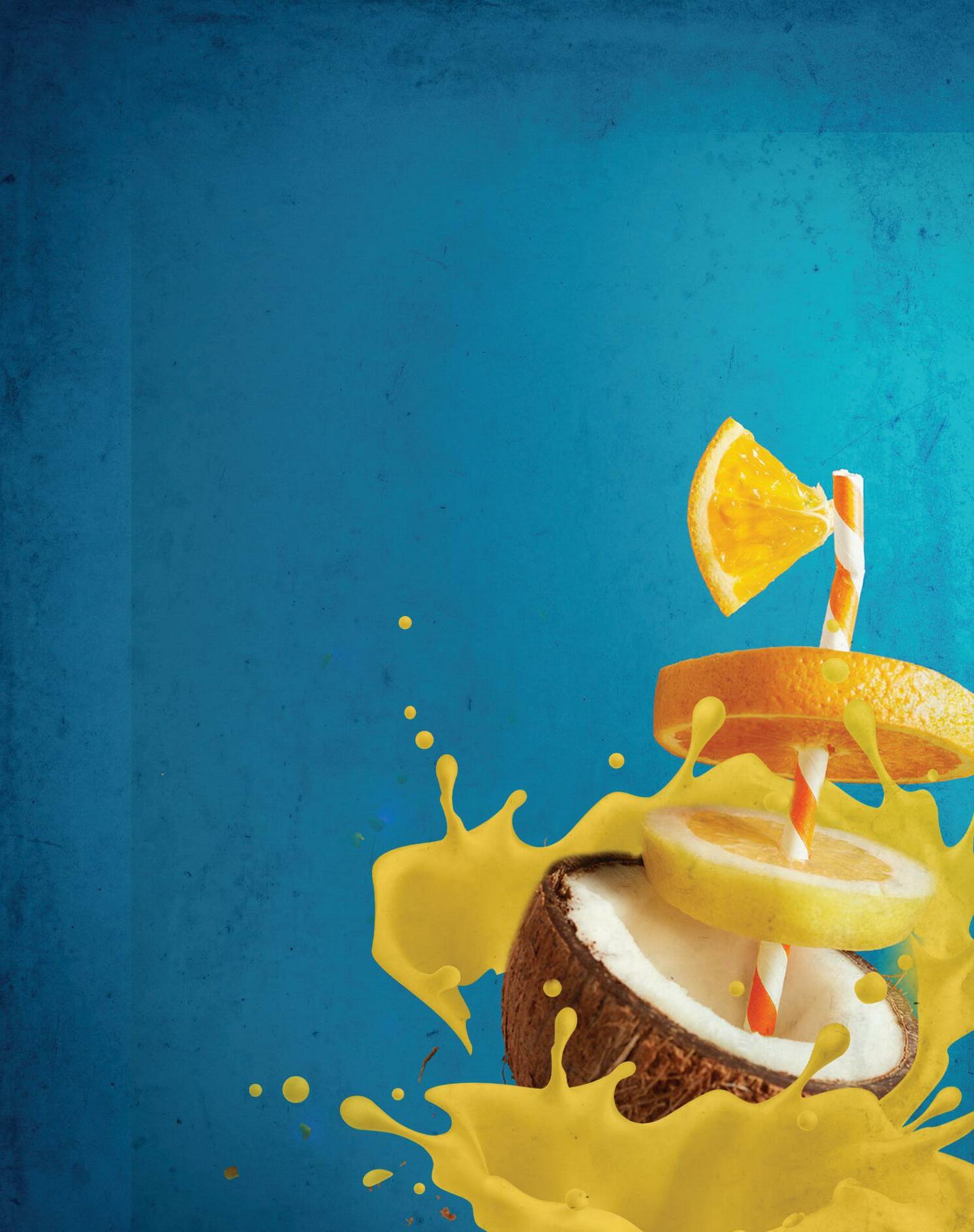









COCONUT ORANGE SMOOTHIE | SMOOTHIE Coc ut Orange Smoothie
RECIPE BY KATHY LEE
A sip that makes you say, “Ouuuu.” This is the perfect holiday smoothie. The smooth coconut milk paired with hints of orange brings all the warmth needed for that Christmas spirit. Not only is it a treat, but it is healthy. How can you go wrong with fresh oranges? We suggest you keep your blenders close because we feel you’ll be making this more than once. YIELDS: 2 Smoothies INGREDIENTS: 2 Oranges (Juiced) 1 Banana ½ Cup Coconut Milk ½ Teaspoon Cinnamon 1 Tablespoon Honey 1 Tablespoon Vanilla 4 Ice Cubes Whipped cream (optional) INSTRUCTIONS: Step One: Add all your ingredients to a blender and blend until smooth. Step Two: Pour into a glass and top with whipped cream. Step Three: Enjoy! 3 5 | u

















COVID | THE AFTER EFFECTS 3 6 | u THE AFTER EFFECTS OF COVID-19 WRITTEN
BY SURAYA MCCOMIE
IDENTIFYING LONG COVID
The typical symptoms associated with COVID-19 include sore throat, fever, loss of smell or taste, fatigue, shortness of breath, body aches, and headaches. People that suffer from long COVID generally experience fatigue, fever, and respiratory issues, including shortness of breath. In addition, some people experience a permanent loss of smell or taste, joint or muscle pain, changes in their menstrual cycle, and blood clots. Although those symptoms are more severe, they are much less common. In some cases, people with long COVID experience more detrimental symptoms that require them to be in and out of the hospital months after testing negative. People also become bedridden for weeks.

HOW DO I TREAT LONG COVID?
As we know, there is currently no cure for COVID-19, so the most advised way to manage long COVID is by treating the symptoms you experience and, of course, staying up to date with your COVID-19 vaccinations. Physicians also recommend that you:
-Consume vitamin C
-Eat properly
-Practice some form of physical activity
-Get enough sleep nightly
If you are experiencing more serious post- covid symptoms, speak with your doctor and have them advise you. Many individuals with long COVID realized that the symptoms are long-lasting and have
returned to their everyday lives; going to work, traveling, and socializing.
NOTE THAT LONG COVID IS NOT CONTAGIOUS.
This is important, especially if you have long COVID or know someone with it. Despite the symptoms, you are not at risk of spreading the disease.
CAN I AVOID LONG COVID?
The only way to avoid long COVID is by avoiding COVID-19. Getting vaccinated, constantly washing your hands, and simply being sanitary may be the only few steps in the right direction to lower the chances of us contracting the virus.
If you or a loved one is suffering from what might be long COVID, the smartest thing to do would be to see a doctor because who knows? You might just have the flu. Despite being noncontagious, long COVID should be taken just as seriously as the COVID-19 virus. It affects all our systems (skeletal, muscle, respiratory, digestive, etc.), and specific measures must be taken. However, there are steps we can take to prevent ourselves from getting the virus or being able to fight the virus once it enters our bodies. Continue to protect yourself and others by following the preventive measures in place by your health facilities.
THE AFTER EFFECTS | COVID 3 7 | u
WE ALL WISH THAT COVID-19 WAS A TOPIC OF THE PAST, YET HERE WE ARE WITH ANOTHER ARTICLE. THIS TIME IT’S NOT WHETHER WE TEST POSITIVE FOR COVID BUT WHAT HAPPENS AFTER. ACCORDING TO MEDICAL PROFESSIONALS, AN INDIVIDUAL EXPERIENCES LONG COVID WHEN THEY HAVE TESTED NEGATIVE ON A COVID-19 ANTIGEN OR PCR TEST, YET THEY STILL EXPERIENCE A RANGE OF SYMPTOMS ASSOCIATED WITH COVID-19 WEEKS OR EVEN MONTHS AFTER.
10
4.CHOOSE VITAMINS AND SUPPLEMENTS WISELYThere is strong evidence to suggest that our bodies absorb vitamins and nutrients from foods more easily than supplements. However, sometimes it can be beneficial to supplement our diets with additional vitamins.
5.WASH YOUR HANDS - We’ve become even more accustomed to practicing good hand hygiene in recent months, mostly because of Covid-19 and other deadly illnesses. Because we use our hands to touch and hold things, they are a primary contributor to the spread of germs. Regularly washing your hands can help reduce the spread of viruses and bacteria that could harm your immune system.
6.STAY HYDRATED - We are all aware that drinking water is essential to life and health. Not that staying hydrated stops us from getting ill but being dehydrated would harm our health.
WAYS TO BOOST YOUR SYSTEM
IMMUNE
WRITTEN BY STAFF WRITER
1.EAT WELL - Research shows that having a healthy gut is vital for a healthy immune system. Fermented foods like kimchi and yogurt contain friendly bacteria that support your immune system and nutrients and vitamins that support immune health. Not a fan of fermented foods? A diet consisting of a range of fruits, vegetables, beans, and lentils is another way to ensure immune health.
2.GET ENOUGH SLEEP - While sleeping, our bodies produce essential immune system cells, including cytokines that fight against inflammation and T cells. T cells are white blood cells that control our immune response. Studies show that if we don’t get enough sleep, our immune system weakens, increasing the chance of becoming ill.
3.EXERCISE REGULARLY - Studies have also shown that half an hour of moderate exercise daily stimulates your immune system and improves your circulation. This makes it easier for those immune-boosting T cells to travel around the body, getting to the places they need to tackle the infection.
7.REDUCE YOUR STRESS LEVELS - Looking back at the third point, exercise is one of the easiest and most natural ways to reduce stress. Having a high-stress level will severely impact your immune health because long-term stress can cause inflammation in the body and contribute to imbalances in immune cell function. Meditation and yoga are also ways to naturally reduce our stress levels.
8.LIMIT YOUR ALCOHOL INTAKE - Drinking too much alcohol has a negative impact on your immune function. This is because alcohol is a toxin. When we drink alcohol, our bodies must work overtime to expel it and detoxify our system, which takes a lot of extra effort. While this process is happening, our normal immune function is neglected, so regularly drinking too much alcohol can cause our immune system to be regularly suppressed. As a result, heavy drinkers are more susceptible to serious illnesses like heart and liver diseases.
9.PRACTICE DEEP BREATHING - This one may sound a bit far-fetched, but scientific evidence demonstrates that when we breathe, the movement in our diaphragm stimulates lymph flow. Lymph is a clear-to-white fluid that is made up of white blood cells. Lymph flow is connected to immune response. Other benefits include lowering cholesterol levels, lowering blood pressure, and improving the blood flow in our arteries.
10.PROPOLIS - It is well known for supporting the body’s immune function. It is antibacterial, anti-inflammatory, antiviral, and antifungal. Taking a propolis supplement, such as propolis capsules or tablets, can be a great way to benefit from its immune-supporting antioxidant effects. Unlike pharmaceutical medicines, propolis works by supporting the body’s natural immune function.
THE NEXT U
January
THE GLOBAL OBESITY EPIDEMIC CHALLENGES, HEALTH INITIATIVES, AND IMPLICATIONS.
Time Perception
Does time speed up as we age?
Conjunctivitis
Symptoms and Complications.
Article submission guidelines
U strives to provide informative, educational articles emphasizing health and lifestyle in the Caribbean. We select articles that will appeal to our Caribbean audience that are uplifting, informative and pertinent to health and wellness.
Policies
U The Caribbean Health Digest retains the right and complete ownership of the articles written and published here. This means that if we publish your work in U, we can also publish in any another publication that we may choose, we will however always give credit to all our writers.
All articles are accepted on speculation. Publication of any article cannot be guaranteed. U reserves the right to edit all copy.
Specifics
All accepted articles will be accompanied by the byline and monetary compensation as set out in our writers’ contract.
Letters to the editor
We encourage Letters to the Editor commenting on recent articles published in our magazine. They are not peer reviewed as such, but are assessed in-house to make sure they are factual and non-inflammatory, etc.
Submit all comments, letters and/or subscription requests to:
U The Caribbean Health Digest, Highway Plaza, Level 2, West Wing
LP #80 Calcutta Settlement Road No. 1, Freeport, Trinidad & Tobago or email us at register@uhealthdigest.com
www.uhealthdigest.com
Advertising. P: 868-280-3353 + 4536
to March 2023















































































































































































































 WRITTEN BY STAFF WRITER
WRITTEN BY STAFF WRITER

























































 WRITTEN BY SHERINE MUNGAL
WRITTEN BY SHERINE MUNGAL


































